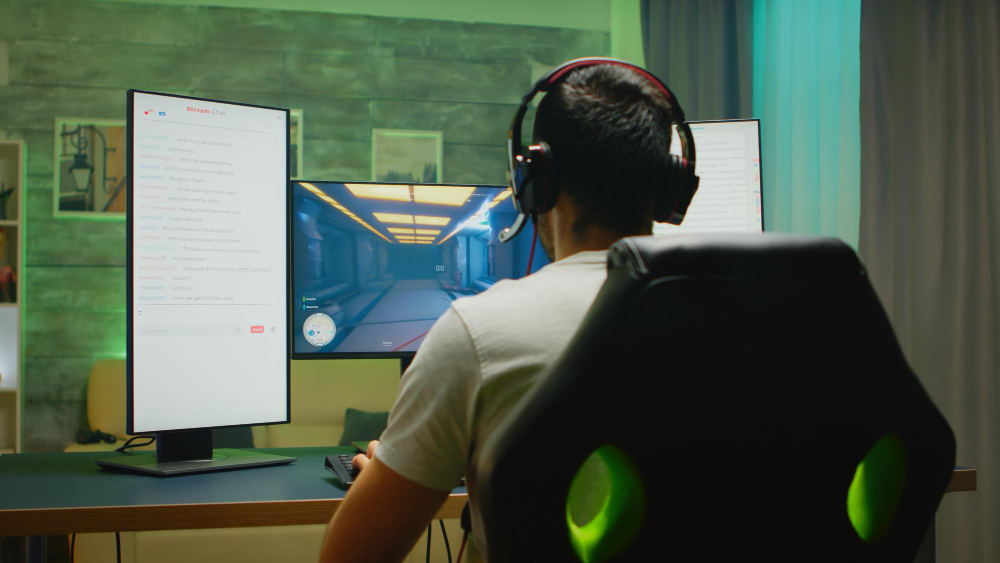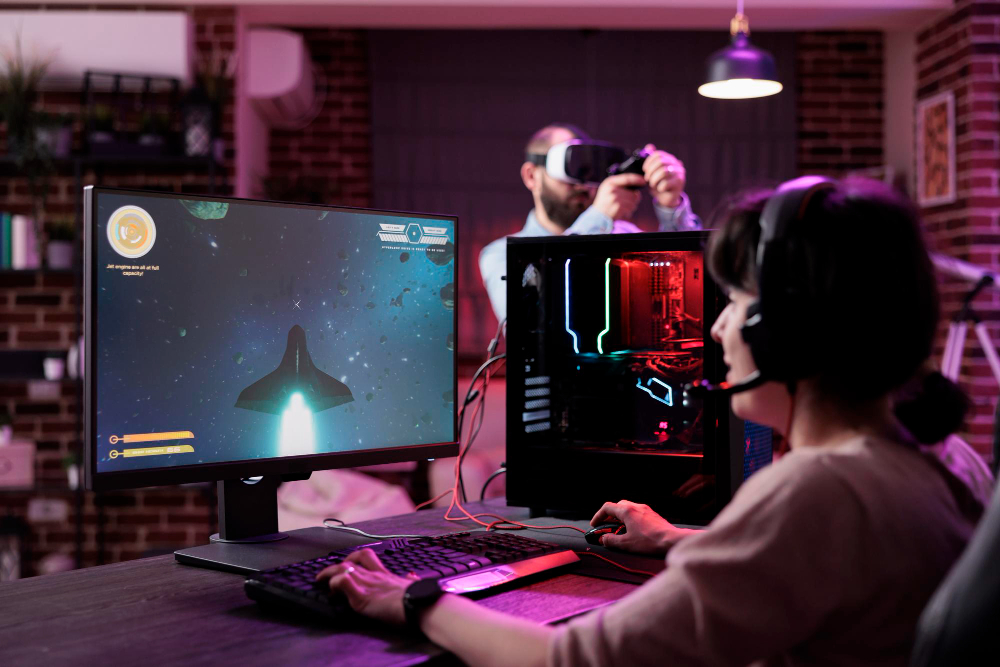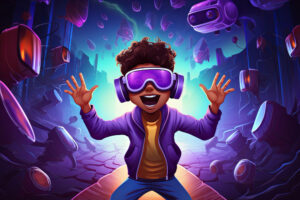Are you someone looking to bring your game visions to life? We understand that game development may not always be easy and quick. It may take months and years to produce a finished game and release it in the market. However it is not as difficult now as it used to be a decade ago. Advancement in gaming technology and accessibility are main reasons behind this. People around the globe are more inclined to participate in the process of game development now. So, you do not need to be frightened to start with game development.
This beginner’s guide will explain the process of game development and provide you with the basics to get started with your game development journey.
Explaining Game Development
Game development is a collaborative process that involves a fusion of creativity and technicality. It starts with conceptualization and game design, where developers formulate ideas and establish basic mechanics and rules. This pre-production phase involves storyboarding, prototyping, and technical planning to set the foundation for coming stages. During the production phase, artists create 2D and 3D assets, while programmers delve into coding for game development to implement essential mechanics, artificial intelligence (AI), and other technical elements. Simultaneously, sound engineers contribute by crafting audio elements, and level designers create diverse environments to ensure engaging gameplay experiences. The final stages involve optimization, bug fixing, and refinement of the user interface and experience. Game developers also prepare for distribution by meeting platform requirements, making marketing strategies, and providing post-launch support through updates and community interaction.

What Skills Do You Need for Game Development?
Game development has evolved and become simpler with time. Integration of AI and AI generated 3D assets have made it even more efficient and accessible. Therefore, if you want to get into game development, you do not necessarily need to have all the skills. However, here are a few skills that can help you excel in this area:
1. Programming Proficiency:
A cornerstone skill for game developers is proficiency in programming languages such as C++, C#, or Java. This skill enables developers to write the code that forms the backbone of a game, including mechanics, AI, and interactions. Understanding algorithms and data structures is crucial for optimizing performance and creating efficient, bug-free code. Continuous learning and staying updated on programming trends can be helpful, given the rapidly evolving nature of technology in the gaming industry.
2. Game Design Principles:
Game design goes beyond coding; it involves shaping the player experience through mechanics, rules, and overall structure. Developers need to understand player psychology, balance difficulty levels, and create engaging narratives. This skill requires a combination of creativity, critical thinking, and an in-depth knowledge of game design principles. Iterative prototyping and user testing are often used to refine and perfect the gameplay experience, ensuring it is both enjoyable and challenging.
3. Graphic Design and Animation:
Visual appeal is crucial in attracting and retaining players. Proficiency in graphic design and animation involves creating captivating 2D and 3D assets, character models, environments, and animations. Familiarity with tools like Photoshop, Illustrator, or Blender can give you an advantage. Game developers need an artistic eye to ensure the visual elements align with the game’s overall design and contribute to the immersive experience that modern gamers expect.
4. Problem-Solving Aptitude:
Game development can be inherently challenging, requiring developers to troubleshoot and solve problems regularly. Whether it’s debugging code, optimizing performance, or addressing unexpected technical issues, a strong problem-solving aptitude is essential. The ability to analyze complex systems, identify issues, and implement effective solutions efficiently is critical for maintaining project momentum and delivering a polished final product.
5. Communication and Collaboration Skills:
Game development is a collaborative effort that involves various specialists working together. Effective communication and collaboration skills can be helpful to ensure that team members understand project goals, share progress, and address challenges. Clear communication helps bridge the gap between developers, artists, designers, and other stakeholders. Additionally, the ability to give and receive constructive feedback fosters a positive and productive working environment, contributing to the overall success of the game development process.
Components of Game Development:
A game itself has different components and so does the game development process. These different components come together while building a game and they can be handled by different teams or experts. So, let’s have a look at these components:
1. Story:
A game must have a story. The story serves as the conceptual backbone that guides players through the immersive world developers create. A well-developed story encompasses plot details, character development, and thematic elements. Game developers strive to engage players emotionally, building a connection to the game world through compelling characters, dynamic plots, and meaningful choices, thereby attracting more players to it.
2. Graphics:
Graphics, including characters, game environments, weapons, and effects, form the visuals of a game. Character design involves meticulous attention to detail, ensuring each entity aligns with the game’s aesthetic and narrative. Environments are created to be both visually stunning and functionally engaging, contributing significantly to the overall player experience. Weapons and objects are designed not only for functionality but also for their visual impact, providing players with a visually satisfying and coherent gaming environment.
3. Sound Design:
Sound design is a fundamental aspect of game development, involving the creation and integration of audio elements. This encompasses background music, ambient sounds, character voices, and sound effects. The strategic implementation of sound elements increases immersion, sets the tone for different game scenarios, and provides crucial audio feedback to players. A well-executed sound design complements the visual components, contributing to a captivating gaming experience that the players do not forget easily.
4. Lighting:
Lighting is vital in gaming and is an important component in game development, influencing the atmosphere, mood, and visual appeal of the virtual world. Game developers employ various lighting techniques, such as natural, artificial, and dynamic lighting effects, to create realistic environments within the virtual world. Effective lighting not only highlights key elements within the game but also plays a role in establishing the overall ambiance and guiding players through different events in the story. Careful attention to lighting contributes to the overall quality of the gaming experience.

Step-by-guide to Game Development:
Now, let’s break down the process of game development into a few manageable steps:
1. Define Your Game Concept:
Start by brainstorming and conceptualizing your game. Spell out how the game will play, the story it’ll tell, and the visuals you want. This step is not just about setting the stage; it is the guide for your whole game-making journey, helping you figure out design, coding, and other necessary elements. Having a clear game concept isn’t just practical—it is what gets everyone excited and on board for creating an awesome gaming adventure.
2. Choose a Game Development Platform:
In this phase, you’ll need to make a decision on the platform for your game—whether it’s PC, console, mobile, or a combination. Each platform comes with its specific requirements and limitations, significantly influencing the design choices and technical considerations throughout the development process. This decision is important as it not only determines where your audience will access your creation but also sets the foundation for the design and technical aspects of your game. Consider the preferences of your target audience and where your game will most effectively reach and engage players.
3. Learn the Basics of Game Design:
Take the time to familiarize yourself with basic game design principles. Grasp the dynamics of player engagement, craft balanced experiences, and develop a progression system that ensures player investment. This understanding will serve as your compass, steering you towards informed decisions at every stage of the development process. Whether it’s shaping the overall player experience or fine-tuning specific game mechanics, a solid grasp of game design principles is indispensable for creating a compelling and enjoyable gaming journey.
4. Acquire Coding Skills:
Acquiring skills of coding for game development becomes essential as you venture into this. Opt for a programming language for game development, such as C++. Familiarize yourself with widely-used game development frameworks. The proficiency in coding for game development will help you for implementing the detailed mechanics and functionalities crucial to your game.
5. Create Game Assets:
Either develop or acquire graphics, animations, and other visual assets that sync up with your game concept. Many online game asset stores offer these and tend to be cost effective, which in turn can save you time. These elements are more than just visuals; they’re the heart of your game, responsible for making the player’s experience engaging. Whether it’s character designs, backgrounds, or animations, investing in high-quality visual assets ensures that your game stands out and resonates with your audience. Visit 3Daily for amazing customizable game assets.
6. Implement Gameplay Mechanics:
Furthermore, dive into coding, the core functionality of your game, covering everything from player controls to interactions and objectives. Utilize the programming skills you’ve acquired to transform your game concept into a functional prototype, allowing players to dive into the interactive elements you’ve envisioned. This stage is where your game truly takes shape, with smooth controls, engaging interactions, and clear objectives that form the backbone of the player experience.
7. Integrate Sound:
We have already seen how audio is an important component of games. So, elevate the experience of your game by including sound effects and music. This important step adds an additional layer to the gameplay, enhancing the gaming satisfaction and boosting player engagement. Thoughtful integration of sound elements can intensify emotions, provide crucial cues, and contribute significantly to the overall enjoyment of the gaming experience. So, pay attention to the auditory details, as they play a key role in making your game stand out.
8. Testing and Debugging:
Thoroughly test your game for bugs and issues. Engage in playtesting to identify potential problems and fine-tune the user experience. This phase is all about ensuring a stable and enjoyable game for your players. Take note of any hiccups or glitches that crop up during testing, and address them promptly. A polished and smooth gameplay experience is crucial for player satisfaction, so invest the time and effort into this testing and debugging phase to deliver a game that’s both stable and enjoyable.
9. Optimize and Polish:
Finally, fine-tune your game to improve performance, optimize graphics, and add final touches. Take into account the feedback from testing, make necessary adjustments, and meticulously polish the overall presentation. This attention to detail, coupled with a focus on enhancing the player’s experience, is what ensures your game is not just good but ready for its grand release. So, invest the effort to make every pixel and interaction count.

Conclusion
In conclusion, embarking on the journey of making a game can be a rewarding experience, and with advancements in technology and accessibility, it’s more feasible than ever. This guide provides a comprehensive overview, from understanding the basic skills required to the step-by-step process of bringing a game to life. Whether delving into programming, mastering game design principles, or creating captivating visual and audio elements, aspiring game developers can follow this guide to navigate the intricate yet exciting realm of game development. Remember, perseverance, continuous learning, and a passion for creating interactive experiences are key ingredients for success in this field.




